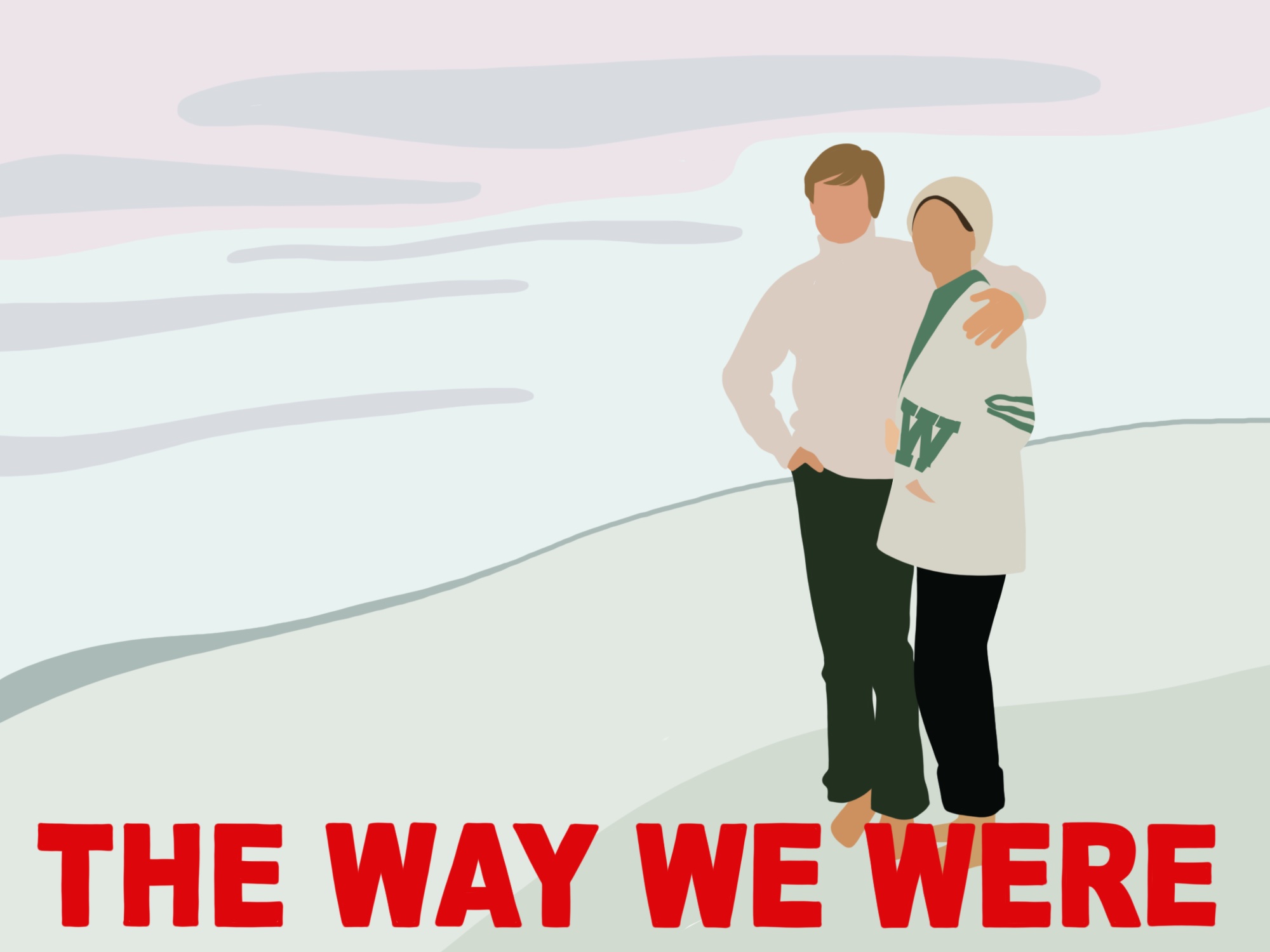“The Way We Were,” released in 1973, is a classic romance film starring Barbra Streisand and Robert Redford. You may be familiar with the heart-wrenching song of the same name, “The Way We Were,” by Streisand herself.

Set in the post-World War II McCarthy era, the love story between Katie Morosky and Hubbell Gardiner is tumultuous and political. Katie is an outspoken anti-war activist and Marxist, while Hubbell is a World War II veteran and All-American boy.
They originally met in college, but existed in vastly different crowds. Years later, they run into each other at a bar, and fall in love.
Their differences contribute to their intense chemistry. With Katie, Hubbell feels interesting simply by association. He gets to experience the thrilling life of activism that he lacks the gall to participate in. Katie is also idealistic and truly believed in his writing abilities.
With Hubbell, Katie feels a sense of stability and privilege that she was never afforded. But despite its appeal, this life was never meant for her.
As their story unfolds, they pretend that they can truly give each other what they want. In reality, neither party was willing to give up their way of life.
Katie’s hair is an important symbol throughout the film. In the beginning, she wore her natural curls, but switched to a straight, classic style after marrying Hubbell. After their relationship ends, she brings back her curls.
Through her hair, we see Katie’s attempt to conform to the kind of woman Hubbell “should” be with. She invites him over late at night to confront him about this, saying, “I know I’m attractive… But I’m not attractive in the right way, am I?”
When Hubbell’s friends start to make fun of Eleanor Roosevelt right after FDR died, Katie jumps in to scorn them for their cruelty, and her combative opinion embarrasses Hubbell.
To me, their politics aren’t the central force that drove them apart. I think their romance failed because of Katie’s convictions. Hubbell doesn’t understand her passion because he never needed to fight for anything.
Katie follows Hubbell to California so he can follow his dreams, and she becomes a housewife and mother. Again, her strong thinking gets in the way as she protests against McCarthyism. Her complexity threatens the simple, affluent life that Hubbell desires.
While Katie is pregnant, Hubbell has an affair with his old college girlfriend — a girl who more aligns with his world. The pair then divorces and marries other people.
I appreciated how closely the movie analyzed the lives of each lead. Both of them were highly developed characters even before they got together. This helped inform the reasons why their relationship flourishes and struggles in unique ways that often other movies fail to do.
The intricacy of the characters only makes their story more real. Neither Katie or Hubbell are painted as entirely good or bad, which is true of most relationships.
The best moment in the film is the ending: their chance encounter outside the Plaza Hotel in New York City. Katie is passing out “Ban the Bomb” flyers when she runs into Hubbell with his new girl. After a somewhat awkward conversation with him in front of the other woman, he approaches her alone across the street.
She invites Hubbell and his girl over for a drink sometime, yet they both acknowledge that will never happen. She says, “Your girl is lovely, Hubbell,” and brushes her fingers across his face. They hold a heartbroken gaze and embrace, both of them aware that they would’ve never worked together.
The scene is so iconic that it was mimicked in Sex and the City, when Carrie recites Katie’s line to Big after seeing him with his new girl. When Carrie says it, it shows how both Big and Hubbell chose the simple, uncomplicated woman — even if that left them ultimately unsatisfied.
This begs the question of whether we can all see ourselves in Katie and Hubbell. This movie, despite being over 50 years old, tackles issues of the modern relationship.
Some people, like Hubbell, don’t want their partners to challenge them. They want to date someone complex when it’s comfortable for them and want you to bite your tongue otherwise.
The movie teaches us that we shouldn’t conform or change ourselves for the sake of making a relationship work.
Despite these faults, it’s endearing to see their love for each other. The last scene shows how they have finally accepted their differences and moved on—but their love still remains. Streisand’s song continues to tell their story: “Memories / Light the corners of my mind / Misty water-colored memories / Of the way we were.”
She continues, “If we had the chance to do it all again / Tell me, would we? / Could we?”
There’s a lot to learn from Katie and Hubbell, so I highly recommend watching this tragic love story — you’ll likely see yourself in it.



















































































































Susie • May 26, 2025 at 12:52 pm
My favorite scene is at the end, when they spot each other across the street. The scenes are masterful I could feel the hurt and failure of marriage and loving each other so much. The incompatibility of their personalities were too large to overcome in marriage.
One of my favorite movies